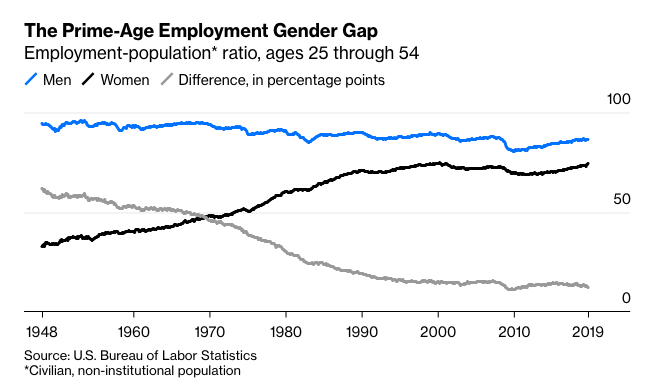The U.S. labor market has just hit another happy landmark. Of Americans aged 25 through 54 who were neither in military uniform nor behind bars, 80.3% have jobs. That equals the January 2007 high of the last economic expansion.
This measure, also known as the prime-age employment-population ratio, or Epop 1, avoids a key limitation of the headline unemployment rate, which only counts people actively looking for jobs. According to the unemployment rate, the current job market is the best since the late 1960s; according to prime-age Epop, it’s still not as strong as it was in 1999 and 2000.
Then again, if you go by Epop the current labor market is much, much stronger than that of the 1960s, which doesn’t sound quite right. The limitation of Epop in measuring labor market conditions is that it also happens to measure societal change. Epop is so much higher now than in the 1960s because more women have joined the paid workforce. Still, that’s easy enough to sort out by looking at men and women separately:
To emphasize a few things that may not be immediately obvious from eyeballing the above chart, especially if you’re reading this on a phone:
1. Women’s prime-age Epop is nearly back to the all-time high set in 2000; men’s is still nearly three percentage points below, and more than a percentage point below the peak from the previous expansion.
2. The prime-age Epop gap between men and women shrank to an all-time low in the immediate aftermath of the last recession as men lost jobs at a faster rate (the mancession). It grew again after that as men returned to work at a faster pace (the mancovery), but since 2015 it’s been shrinking again.
3. Men’s prime-age Epop passed 95% several times in the 1950s, and hit it again in the late 1960s. As of October it was 86.5%.
To sum up: there are more than five million prime-age men who didn’t have paid jobs in October who would have had them if 1950s/1960s conditions still prevailed and Epop was 95%.









